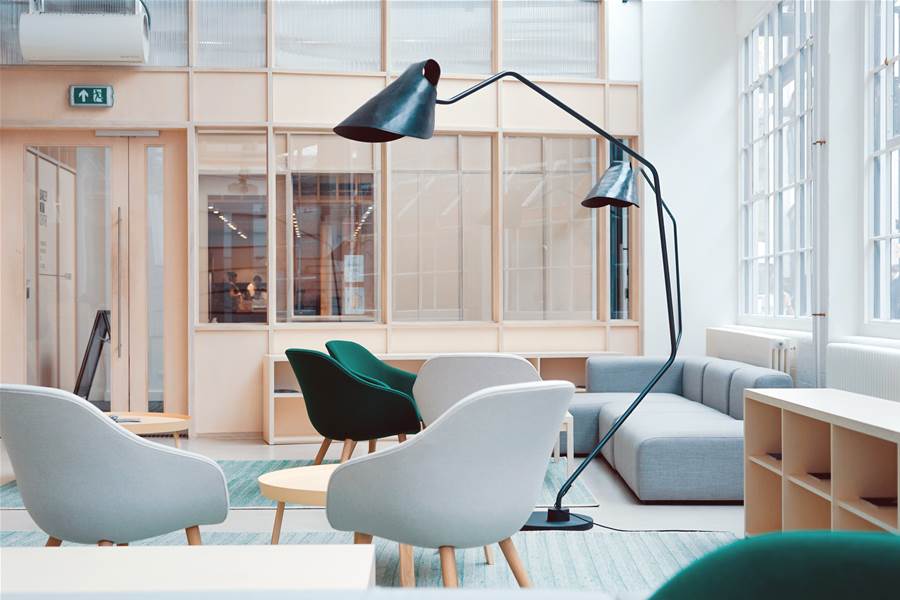The role of hybrid workplaces in a COVID-normal world

Following severe disruptions in early 2020 as COVID-19 began its rampage across the globe, workplaces are slowly coming back to life. It’s becoming increasingly clear, however, that they will be very different environments.
The sudden shift to remote working brought about by the pandemic caused many organisations to rethink the very concept of work. Rather than being a place to which staff travel each day, it is now seen as an activity undertaken from wherever staff happen to be.
A number of large organisations have indicated a full return to the office may never happen. Banking giant NAB has announced the formalisation of flexible working arrangements for staff while other companies are looking to downsize office spaces and encourage more people to carry out their duties from home.
According to networking company Cisco, 58 percent of staff surveyed expect to be working from home for at least eight days each month. Meanwhile, 98 percent anticipate that future meetings will involve work-from-home participants.
The 2021 workplace
While these changes will have a lasting impact on offices, their importance as a key component of business life will remain. Although staff are unlikely to travel to them every day, they will continue to be a useful location for face-to-face meetings and group collaboration. Offices will essentially become part of a wider hybrid work environment in which in-office activity will be blended with remote working.
These new types of environments will also become an important differentiator for organisations looking to source and retain talent. Staff will be attracted to businesses that can offer a compelling mix of remote and office-based work.
To achieve a successful hybrid environment, organisations will need to make a number of changes to existing offices and their supporting infrastructures. These changes include:
- Creating a safe workplace:
With the virus likely to remain part of life for an extended period, organisations need to reduce the chance of it spreading in the workplace. Consider deploying meeting technologies such as touchless join, wireless screen sharing and people counting in meeting rooms.
Digital displays can be installed that indicate the capacity of each meeting room and when it was last cleaned. Voice-activation capabilities can also be added to items such as computer terminals and projectors to allow them to be controlled without needing to touch any buttons or screens. - Improving conferencing capabilities:
Most existing tele- and video-conferencing systems were designed to have the majority of participants in an office environment and a small number in remote locations. These proportions have now been reversed.
Evaluate the equipment currently installed in meeting rooms and ensure it can deliver experience equality for remote participants - high-quality video, audio, annotation and whiteboarding capabilities. Ensure remote staff have been equipped with high-quality cameras and headsets that allow them to be clearly seen and heard from the office. Consider modern collaboration endpoints for remote workers that support AI powered background noise detection and suppression. - Bridge conferencing systems:
Traditionally, many organisations have relied on business-grade, meeting room-based conferencing systems to communicate between locations. However, during the COVID lockdowns, many staff have become familiar with alternative platforms such as Zoom and Teams.
In order to support productive experiences with external client and partner stakeholders, it will be necessary to deploy bridging technology that will allow Zoom and Teams users to transparently connect with systems provided by companies such as Cisco and Polycom. This will allow participants to concentrate on the meeting, rather than the complexities of how to best join when it is hosted by a different vendor. - A shift in organisational culture:
Within many organisations, the traditional management philosophy has been one that staff should work from the office as that is how they can maximise productivity. This mindset will need to permanently change to embrace a future where the majority of staff are likely to be working from home most of the time.
Everything from management and reporting structures to workflows and approval channels will need to be evaluated and, where required, altered to suit this new working environment.
Through making these changes, organisations can ensure they are well placed to operate and thrive in a post-pandemic world. After evaluating the tools and processes already in place, new technologies can be adopted that will ensure staff can be as productive as possible regardless of their location.
The office of 2021 will be a very different place however, by embracing the concept of the hybrid workplace, organisations will be we placed to flourish in the months and years ahead.
Sam Deckert is Founder and Principal Consultant at Peak Insight












